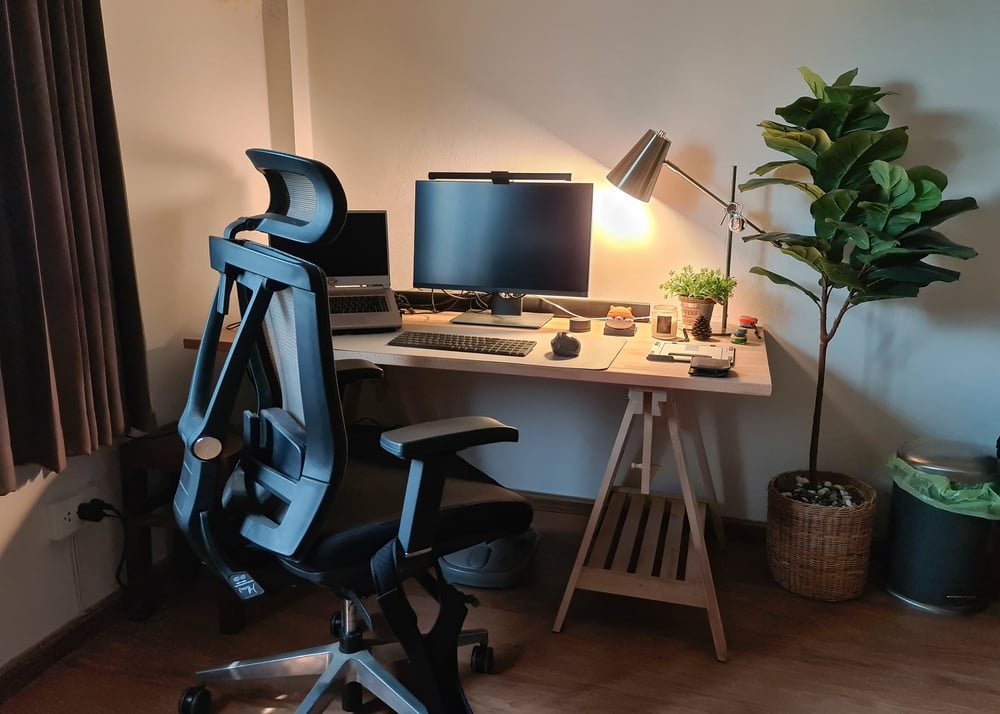
Keep yourself safe at work and out of physio
As a physiotherapist, I assess and treat injuries that occur in the workplace. These can be sudden (acute), or develop gradually over time (overuse).
Overuse injuries come from repeated stresses that cause micro-tears of muscles, ligaments, or joints. Over time, the micro-injury becomes less ‘micro’, and pain and weaknesses become apparent. Overuse injuries are quite common – they can be difficult to diagnose, but relatively easy to prevent.
Any job comes with some degree of risk of injury. Knowing what your risks are and working together with your employer or organization to minimize them is important for keeping your body happy and work-ready.
When possible, look at your work environment to see if anything is within your control to be changed. I will use physiotherapy as an example: There are times when I can modify my environment in order to make a task easier on my body. I can raise and lower the treatment table, or my stool on which I’m sitting, or in some cases I can use equipment that is ergonomically friendly.
Other times, the environment is not ideal, but also not in our power to modify. This is when you need to think of your body mechanics – the way you use your body to perform a task.
Here are some general tips, from head-to-toe, to help you maintain good body mechanics. This list is not exhaustive, so it's important to consider each specific task you have to do, and what risks may be involved.

Head & neck
A common posture that is a big no-no is the forward head posture where the chin juts forward and hinging occurs about one vertebra in the lower neck. Any time you are in an upright position, keep a nice gentle chin tuck, keeping your neck tall.
Upper body
The other common poor posture is the rounded shoulder posture. When in this position too long, the muscles in the front of the chest get tight, and muscles in the back get long and weak. Avoid hunching your upper back, which can also contribute to a forward head posture. Keep your shoulders pulled back, with your chest open.
Arms
Working repetitively above shoulder height can put you at risk of an injury called ‘impingement’ in the shoulder. When it is possible, avoid having your hands overhead for a prolonged time, especially if lifting. This can mean using a step if you’re trying to reach high, finding ways to better position yourself around your task, or taking mini-breaks from the position.
Avoid repetitive reaching away from the body. If it is possible, put your body closer to where you’re working.
Hands & fingers
If your job involves a lot of bending of your wrist or fingers, gripping or grasping, it is important to stretch those tired muscles, and to strengthen the opposing muscle groups to balance it out.
If you work at a computer, look to see what your wrist position is at the keyboard or the mouse. Ideally, they shouldn’t be bent up toward you too far, and the bottom of your wrist shouldn’t sit on a hard surface for a prolonged time.
Low back
Most low back pain in the workplace can be affected by lifting techniques and sitting postures. If you sit a lot, try to support the normal curve of your spine either through a ‘lumbar support’ or a rolled towel. Frequent position changes are very helpful.
For those who lift often during the work day, remember the following important points. Keep the load you’re lifting close to your body. If what you are lifting is below waist height get into a lunge, or a squat position and stick your bottom out like you’re going to sit in a chair. This helps to preserve a ‘neutral spine’ which is slightly arched. Lastly, avoid twisting and bending simultaneously if you don’t need to.
Legs & feet
Wear footwear that is supportive and appropriate for your job. If you have been prescribed orthotics, ensure you wear them while working, to help support your feet and legs. If sitting, change up your position; try not to sit all your time with legs crossed, and if you do cross your legs, try to balance how long each is the leg on top.
If you do notice new pain or weakness, attend to it as soon as possible. While many injuries require 4-8 weeks to heal at the level of the tissue (although you may return to some functions during that period), this time frame can be made longer if the injury doesn’t have a chance to heal, or if it gets re-aggravated.
Be conscientious of what you feel, what your job demands are, what may have caused it, and how that risk can be minimized. Seek help when needed, be it through your work’s first aid service, or your local Lifemark physiotherapist!



